How to kill bindweed: top tips for getting rid of this pesky weed
Our practical guide on how to kill bindweed will help you clear this plant from your backyard

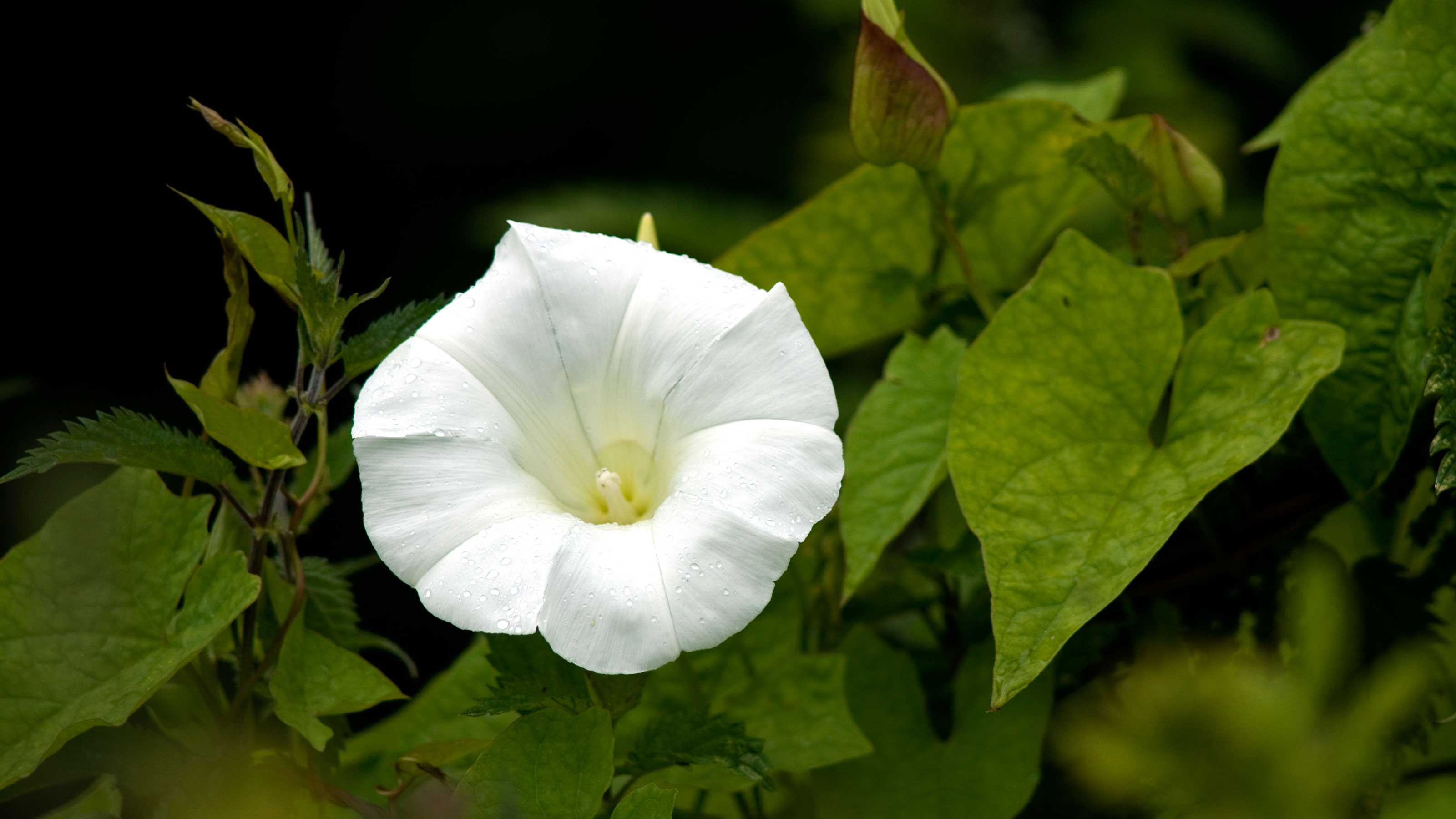
If you need to know how to kill bindweed, then this guide will come in useful. Although the bloom-bearing plant may seem harmless – even attractive – at first glance, this clambering, vigorous weed is a common annoyance amongst gardeners.
'What makes it so bad?', you might ask. The problem with bindweed is its rapid-growing stems, which wind themselves around flowerbeds and borders and quite literally strangle your beloved flowers, veggies or hedge. It's also a nuisance because it's not an easy one to clear – it's a tough perennial, for starters, and its roots tunnel deep down into the ground, growing at a rate of well over 3ft a season. What's more, if even a fraction of root is left in the soil after you've tried digging it up, the weed will happily regrow.
But if you suspect a bindweed infestation in your backyard – don't despair. We share the lowdown on how to tackle it below. And once you've learned how to kill bindweed, our guide on how to get rid of weeds and stop them from spreading is well worth a look for clearing other commonplace intruders.
How to kill bindweed: top tips and practical advice
From how to identify it to how to kill bindweed – these tips will help you get your flowerbeds and borders back to their former glory.
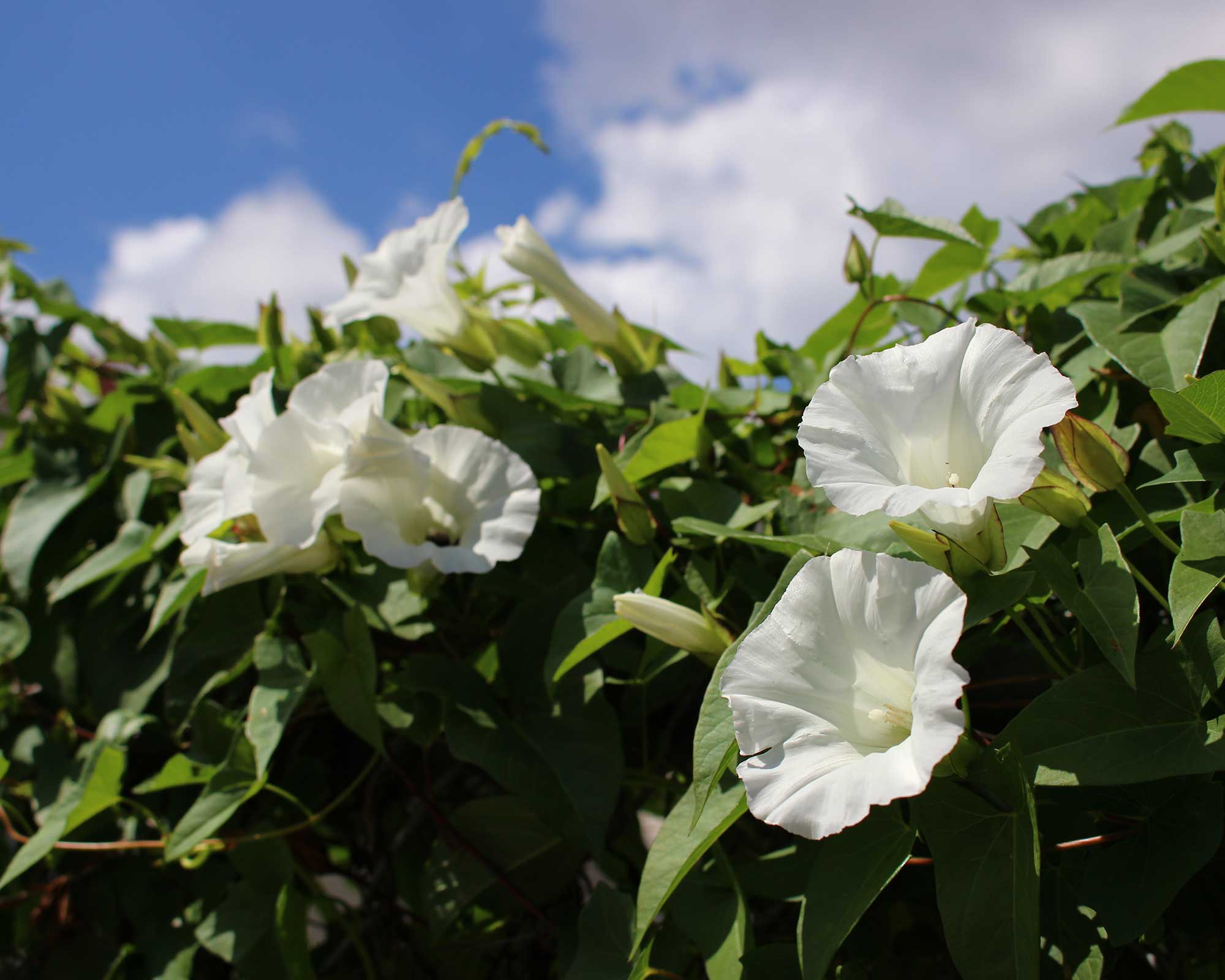
How can you identify bindweed?
First up, you'll need to be sure it's bindweed you're dealing with. Be aware that there are two different types – hedge bindweed (otherwise known as bellbind, and the most familiar in our gardens) and field bindweed. If you're wondering how to identify them, look out for the following signs:
- Both types of bindweed are climbers, with strong, twining stems that bind around plants (hence the name), however field bindweed is slightly weaker.
- Both varieties have large, heart-shaped leaves.
- Whilst hedge bindweed has white, trumpet-shaped flowers, field bindweed has smaller blooms in a shade of pink (sometimes striped with white) and are slightly scented. Both types will flower between summer and early fall.
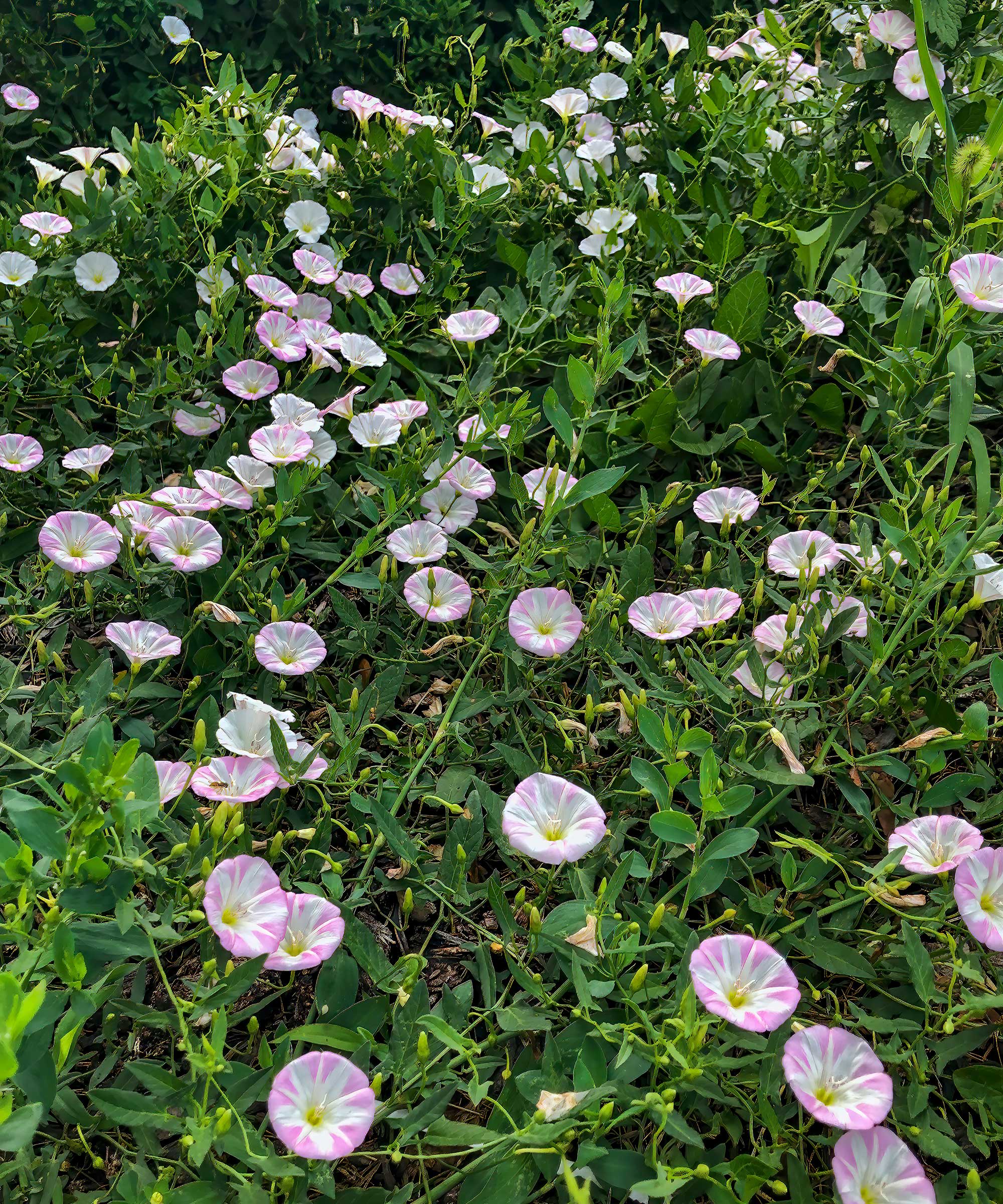
How to get rid of bindweed: 6 simple solutions
Try these tips to rid your plot of bindweed. And if you need to learn how to get rid of another vigorously growing intruder, perhaps our Japanese knotweed guide will come in handy too.
1. Dig up the roots
The roots are a big part of the problem when it comes to bindweed. As the RHS explains, the roots of hedge bindweed may penetrate up to 5m (16ft) deep or more and spread rapidly. Networks of white, shallow, fleshy underground stems grow from these roots, which lead to new plant growth above the soil. 'Even very small sections are capable of producing shoot growth and can unwittingly be brought into gardens hidden among plant roots and in soils or manures,' adds the team. Field bindweed is similar.
So, if you're planning on digging the whole lot up – be sure to do a thorough job. Although one of the best garden spades is a must-have for all sorts of garden tasks, it's best to use a garden fork when removing bindweed roots. It's less likely to break them up, which will only make the problem worse.
A good time to do this is in late fall or winter, when you're carrying out routine digging to your borders. At this point, the bindweed will be dormant and much of the past season's growth will have died back so it makes it easier to handle. Any new growth will begin in the spring. And if bindweed has entwined itself around your perennial plants? You can gently lift and divide them whilst they're dormant, removing the bindweed as you do so, before replanting.
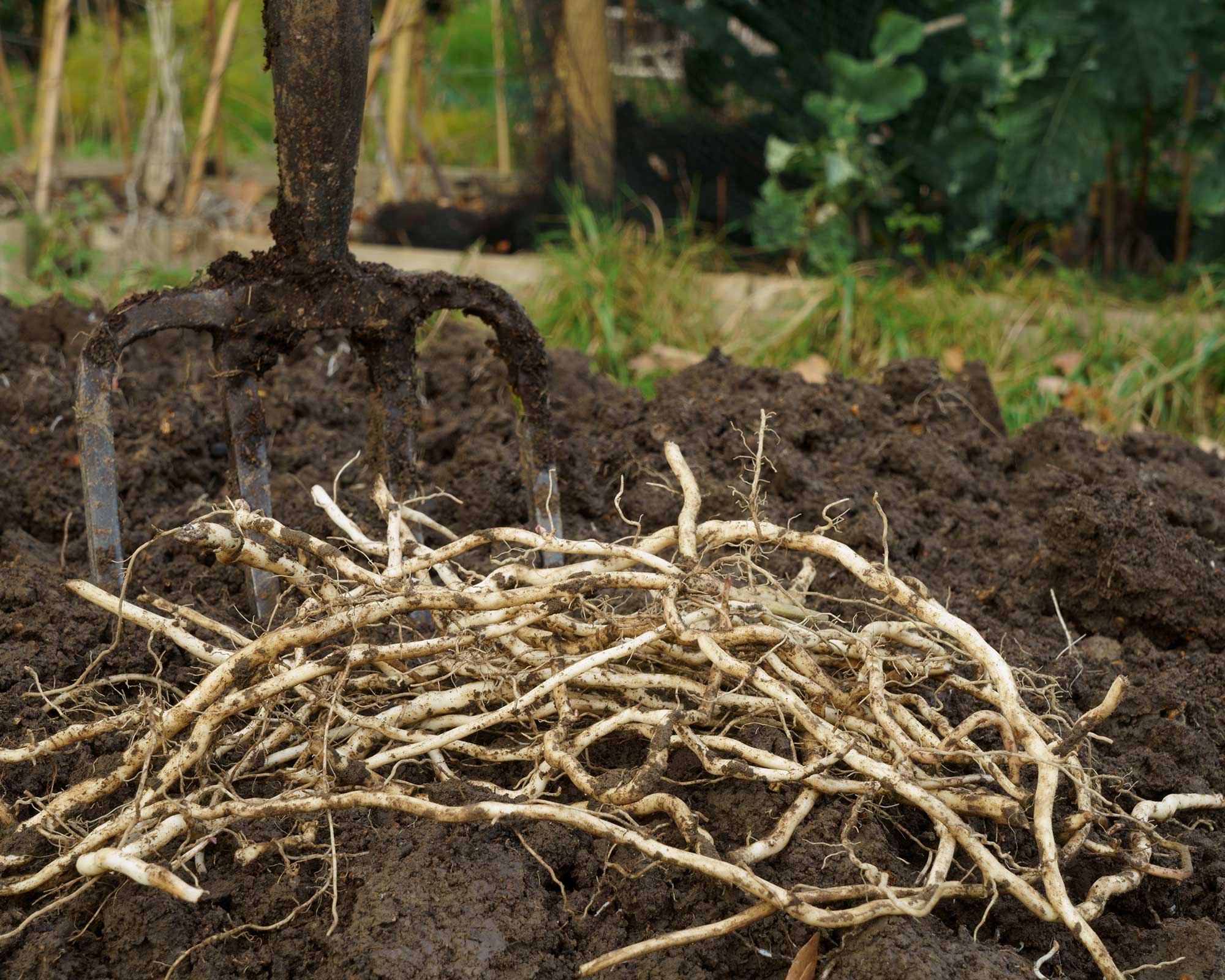
2. Cut them down
It's not aways convenient or even possible to dig up large parts of your flowerbeds on the hunt for bindweed roots. This is especially the case if you're dealing with a well-established weed during the summer months.
What you can do instead is continuously hoe, cut, or pull off shoots, as suggests the experts at Gardeners' World. It's best to sever the stems as close to the base of the weed as possible. Be prepared to do this continuously throughout the season – if you keep at it, the weed will eventually die.

3. Cover them up
Smothering bindweed is one of the most effective ways to get rid of it, however it does take time – around a year or so at least. Cut it back, dig up roots where you can, then apply a layer of something which will exclude all light. A thick weed-suppressing membrane will do the job, or even cardboard topped with organic mulch. Our ultimate guide to mulching has lots of tips should you need them.
Any existing vines or roots beneath the soil will eventually die off, and any seeds will be unable to germinate. Keep an eye on the perimeter of the area, and be sure to remove any shoots that sprout.
4. Pour on boiling water
Looking for another natural method for how to kill bindweed? Try the old boiling water trick. It's simple – just boil some water and carefully pour it onto the base of the weeds and the surrounding area.
However, this tip is only useful if you're trying to clear a patch completely – perhaps because you're starting afresh with a new flowerbed or border. Why? Well, it's non-selective – boiling water will damage any plant it comes into contact with, not just the bad ones.
It's also a useful approach if you want to know how to get rid of ants, too.

5. Create a physical barrier
Weeds creeping into your plot from a neighbor's yard can be infuriating, especially if you've gone to the trouble of getting rid of them on your side of the fence. If you know next door has a bindweed problem it may be worth installing a barrier to stop it encroaching on your turf.
As the RHS suggests, opt for vertical, solid barriers that are 18in (45cm) deep into the soil along your backyard's boundaries. Sturdy fences can be useful if you want to know how to keep rabbits out of your garden, too.
6. Use a commercial weed killer
Of course, not everyone wants to use commercial herbicides in their garden – they're not much good for sustainable gardens or wildlife garden ideas. But sometimes, needs must. And there are lots of effective solutions that will rid your bindweed problem once and for all.
You'll need to use a systemic glyphosate weed killer, which can come in several different forms. Whichever product you choose, always take the necessary safety precautions, keep them well away from children and pets, and follow the instructions on the label.
You'll usually need to apply it directly to the leaves, but be careful to not get it on any of the plants you want to keep as it will kill those, too. If this seems impossible, you can try to carefully unwind the weed from your plants and lay it on bare soil before spraying, as says the RHS. Another option – to be done in spring – is to isolate the bindweed by training it up bamboo canes. You can then take the growth from the cane, put it into a clear plastic bag, and carefully add glyphosate. Then, secure the bag with a clothes peg and leave in place until the bindweed has died.
Our round up of the best weed killer will come in useful if you're taking this approach.
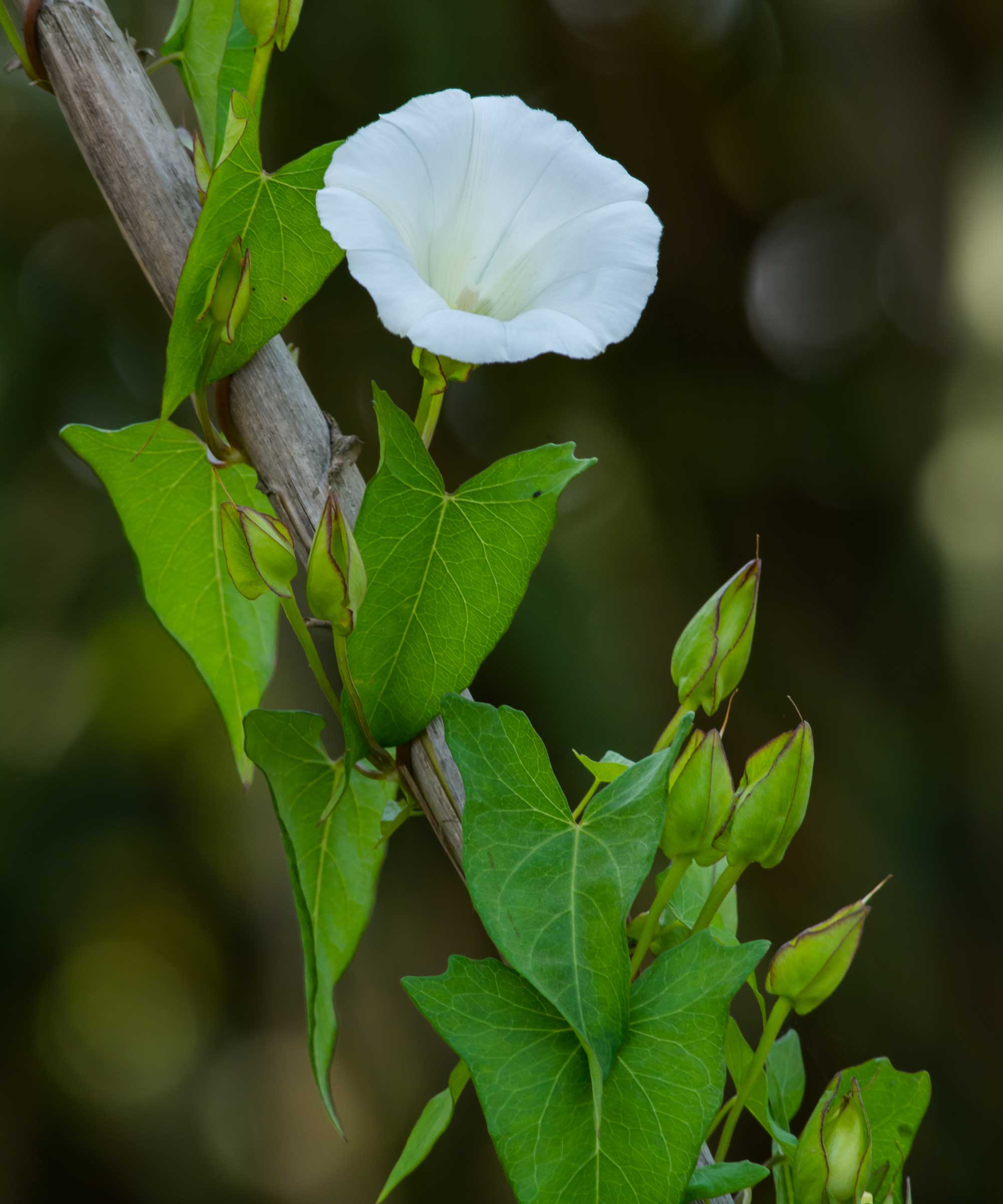
How should you dispose of bindweed roots?
As you'll now know, the roots of bindweed are the source of the problem, so you'll need to dispose of them correctly. Definitely avoid putting them on the compost heap – they'll only survive and then be spread around your yard as you use it. Instead, you'll need to bag them up and put them out with other garden waste for collection.
There are specific disposal dos and don'ts when learning how to get rid of poison ivy too – our guide explains all.
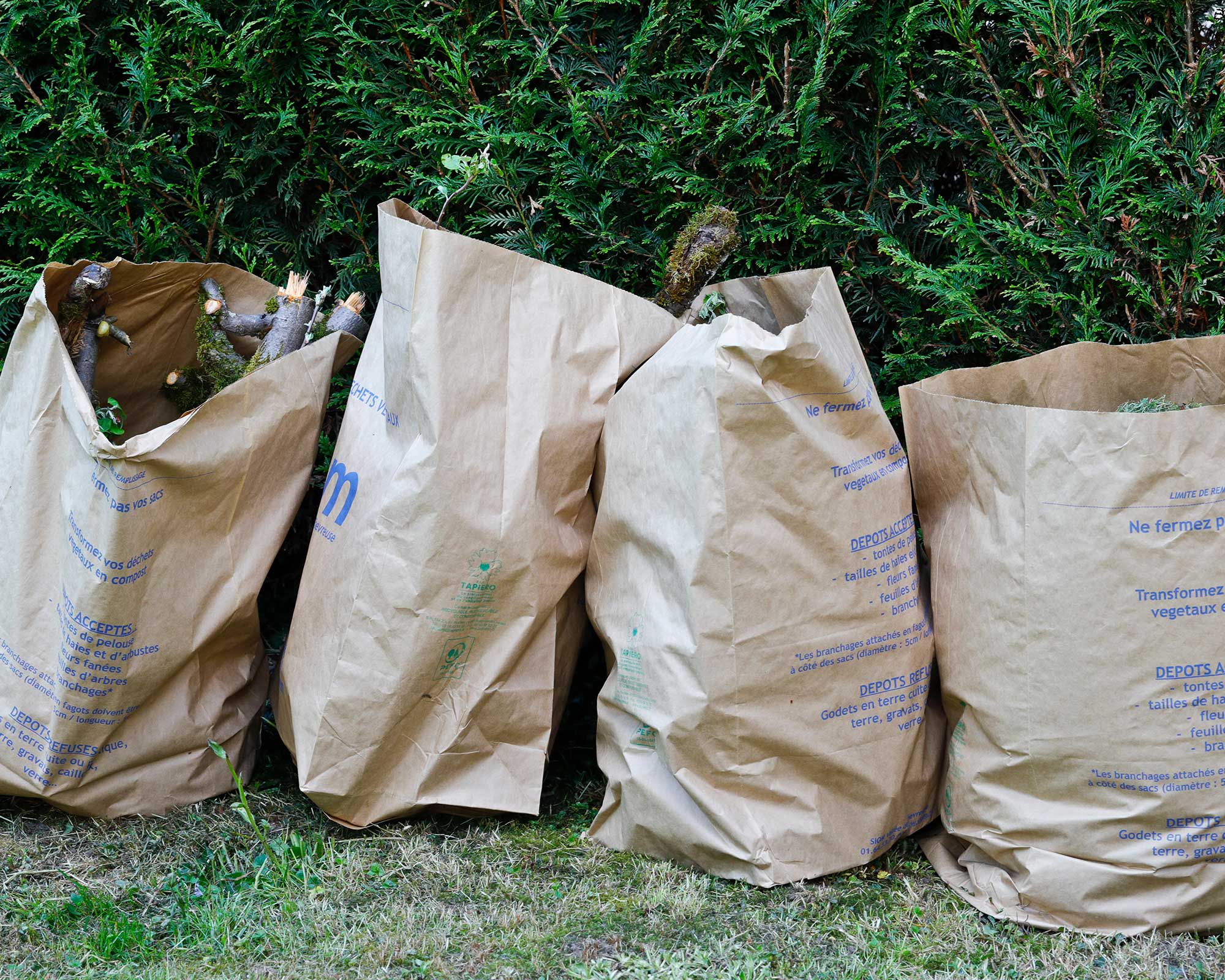
Will vinegar kill bindweed?
Vinegar can be useful for quickly tackling lots of types of weeds, due to the active ingredient of acetic acid. So you may well have heard of using it as a solution for how to kill bindweed, too.
The idea is to spray it onto the leaves (carefully – similarly to glyphosate it's non-selective), and wait for them to wilt. For bindweed, however, it won't affect those all-important roots, so it's not the best approach. You're likely to have more luck with the methods listed above, instead.

The garden was always a big part of Holly's life growing up, as was the surrounding New Forest where she lived. Her appreciation for the great outdoors has only grown since then. She's been an allotment keeper, a professional gardener, and a botanical illustrator – plants are her passion.
